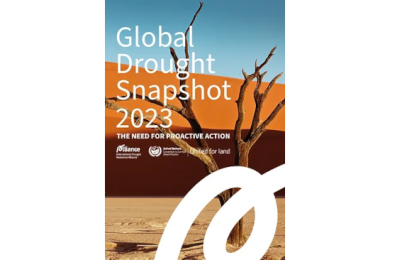The United Nations Convention to Combat Desertification (UNCCD) has released a report titled 'Global Drought Snapshot' at the COP28 climate talks in the UAE. The report highlights the severity of human-induced droughts, describing it as an unprecedented planetary emergency. Droughts, often unnoticed and silent, are identified as a hazard that claims numerous lives, causes substantial economic losses, and impacts various sectors of societies. The UNCCD emphasizes the need for urgent global action and resilience-building measures to address the increasing frequency and severity of drought events, which contribute to declining crop yields, shrinking reservoir levels, loss of biodiversity, and the spread of famines.
The 'Global Drought Snapshot' report underscores the importance of land restoration, sustainable land management, and nature-positive agricultural practices in building global drought resilience. The adoption of nature-positive farming techniques, such as drought-resistant crops, efficient irrigation methods, and soil conservation practices, is identified as crucial for minimizing the impact of drought on crops and incomes. Efficient water management, involving investments in sustainable water supply systems, conservation measures, and water-efficient technologies, is highlighted as another key component.
The report emphasizes the necessity of disaster preparedness and early warning systems for global drought resilience. Investing in meteorological monitoring, data collection, and risk assessment tools can facilitate a swift response to drought emergencies, reducing their overall impact. International cooperation, knowledge sharing, and a commitment to environmental and social justice are deemed essential for building global drought resilience.
Satellite technologies play a crucial role in enhancing drought monitoring and early warning systems. These technologies provide a comprehensive and real-time view of environmental conditions, allowing for the timely detection and assessment of drought-related trends. Satellite imagery can capture key indicators such as soil moisture levels, vegetation health, and water reservoir capacities, enabling scientists and authorities to monitor the progression of drought and assess its severity. Advanced remote sensing technologies can also contribute to mapping and analyzing changes in land cover, identifying areas at risk, and aiding in the development of effective drought response strategies. Additionally, satellite data is instrumental in supporting meteorological monitoring, facilitating accurate weather predictions, and improving the precision of drought risk assessments. By leveraging satellite technologies, nations can strengthen their ability to respond promptly to emerging drought conditions, implement proactive measures, and mitigate the adverse impacts of water scarcity on agriculture, ecosystems, and communities.
Links
Drought Snapshot Website: https://www.droughtglobal.org/

